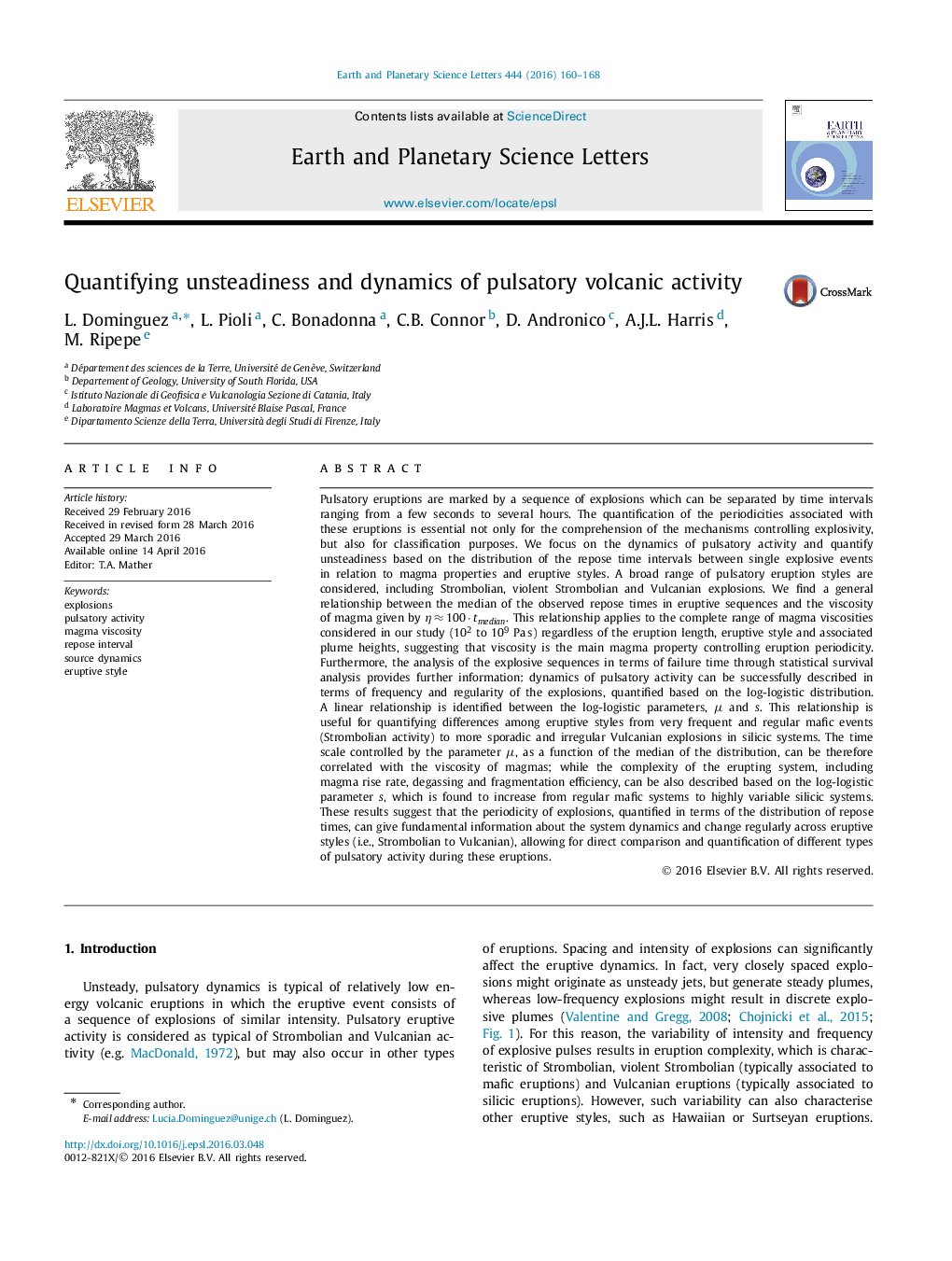| کد مقاله | کد نشریه | سال انتشار | مقاله انگلیسی | نسخه تمام متن |
|---|---|---|---|---|
| 6427498 | 1634712 | 2016 | 9 صفحه PDF | دانلود رایگان |

- Pulsatory activity cannot be well described by traditional classification schemes.
- There is a strong correlation between magma viscosity and median of repose time.
- Univariate statistical models well fit the distribution of repose times.
- Log logistic parameters define a regular trend from Strombolian to Vulcanian styles.
- Pulsatory dynamics changes regularly across eruptive styles with no clear boundaries.
Pulsatory eruptions are marked by a sequence of explosions which can be separated by time intervals ranging from a few seconds to several hours. The quantification of the periodicities associated with these eruptions is essential not only for the comprehension of the mechanisms controlling explosivity, but also for classification purposes. We focus on the dynamics of pulsatory activity and quantify unsteadiness based on the distribution of the repose time intervals between single explosive events in relation to magma properties and eruptive styles. A broad range of pulsatory eruption styles are considered, including Strombolian, violent Strombolian and Vulcanian explosions. We find a general relationship between the median of the observed repose times in eruptive sequences and the viscosity of magma given by ηâ100â tmedian. This relationship applies to the complete range of magma viscosities considered in our study (102 to 109 Paâs) regardless of the eruption length, eruptive style and associated plume heights, suggesting that viscosity is the main magma property controlling eruption periodicity. Furthermore, the analysis of the explosive sequences in terms of failure time through statistical survival analysis provides further information: dynamics of pulsatory activity can be successfully described in terms of frequency and regularity of the explosions, quantified based on the log-logistic distribution. A linear relationship is identified between the log-logistic parameters, μ and s. This relationship is useful for quantifying differences among eruptive styles from very frequent and regular mafic events (Strombolian activity) to more sporadic and irregular Vulcanian explosions in silicic systems. The time scale controlled by the parameter μ, as a function of the median of the distribution, can be therefore correlated with the viscosity of magmas; while the complexity of the erupting system, including magma rise rate, degassing and fragmentation efficiency, can be also described based on the log-logistic parameter s, which is found to increase from regular mafic systems to highly variable silicic systems. These results suggest that the periodicity of explosions, quantified in terms of the distribution of repose times, can give fundamental information about the system dynamics and change regularly across eruptive styles (i.e., Strombolian to Vulcanian), allowing for direct comparison and quantification of different types of pulsatory activity during these eruptions.
56
Journal: Earth and Planetary Science Letters - Volume 444, 15 June 2016, Pages 160-168